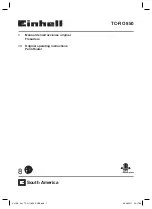
CHAPTER 10. QoS
198
© SAMSUNG Electronics Co., Ltd.
Output Queue Congestion Management
When the link bandwidth is not enough for egress traffic on an interface,
queues can build up and result in increased buffer consumption. Buffer
management is needed to ensure optimum and fair usage of the limited
number of buffers available in the system. It is needed at two levels. It is
needed at the interface level to ensure that one interface does not consume too
many buffers and affect the traffic on other interfaces. Buffer management is
also needed for traffic classes on an interface to ensure that the classes have an
optimum share of the interface’s buffers to meet their service commitments.
It is important to realize that we will not create separate buffer pools for each
interface or class. Instead we will define ‘logical’ buffer pools for each
interface and class which is nothing but a maximum limit which indicates the
number of buffers that the interface or class can use. The sum of these limits,
plus the limits for other uses, cannot exceed the total number of buffers
available.
Following is an explanation of variables/terms used in the following
subsections.
y
BCR - ‘Committed rate bytes’. Root-out class parameter. Number of bytes
that can be sent from an interface in one scheduler interval. This depends on
the bandwidth of the interface.
y
CR - ‘committed rate bytes’. Class parameter. Number of bytes that can be
sent from the class in one scheduler interval. This is configured by the user.
y
bcr - ‘committed rate bytes’. Class parameter. It is the number of bytes that
a class can send in one scheduler interval, corresponding to its CR.
y
BR - ‘Burst rate bytes’. Class parameter. Maximum number of bytes that
can be sent from an interface in one scheduler interval. This is configured
by the user.
y
bbr - ‘Burst rate bytes’. Class parameter. This is the number of bytes a class
can send in one scheduler interval, corresponding to its BR.
Summary of Contents for Ubigate iBG2016
Page 1: ......
Page 16: ...INTRODUCTION XIV SAMSUNG Electronics Co Ltd This page is intentionally left blank ...
Page 34: ......
Page 62: ...CHAPTER 4 System Logging 28 SAMSUNG Electronics Co Ltd This page is intentionally left blank ...
Page 70: ......
Page 108: ......
Page 140: ...CHAPTER 4 RIP 104 SAMSUNG Electronics Co Ltd This page is intentionally left blank ...
Page 156: ...CHAPTER 6 BGP 120 SAMSUNG Electronics Co Ltd This page is intentionally left blank ...
Page 180: ...CHAPTER 8 VRRP 144 SAMSUNG Electronics Co Ltd This page is intentionally left blank ...
Page 264: ...CHAPTER 10 QoS 228 SAMSUNG Electronics Co Ltd This page is intentionally left blank ...
Page 272: ......
Page 298: ...CHAPTER 3 Firewall NAT 248 SAMSUNG Electronics Co Ltd This page is intentionally left blank ...
Page 356: ...CHAPTER 5 IPSEC 306 SAMSUNG Electronics Co Ltd This page is intentionally left blank ...
Page 358: ......
Page 744: ...EQBD 000071 Ed 00 ...
















































